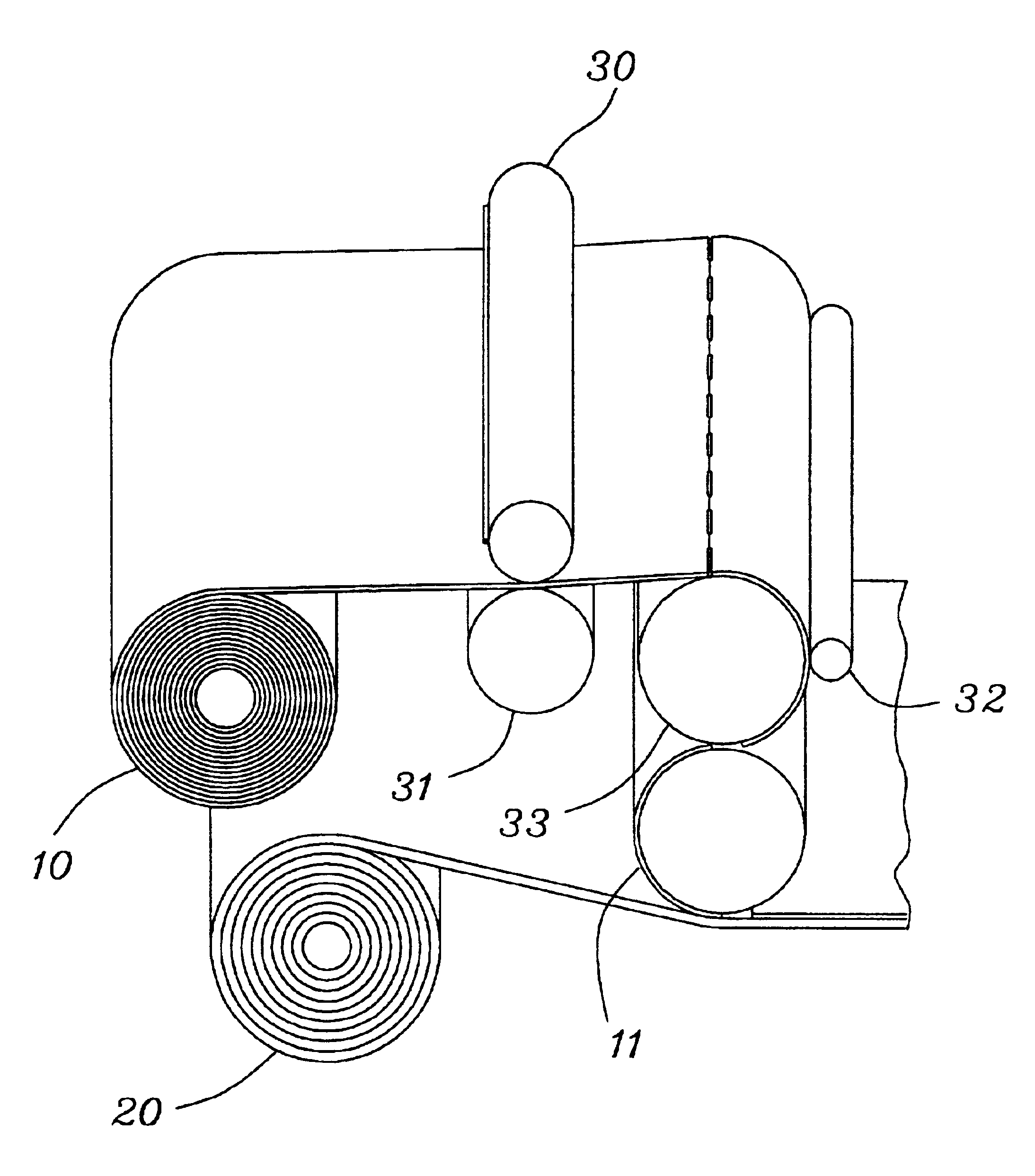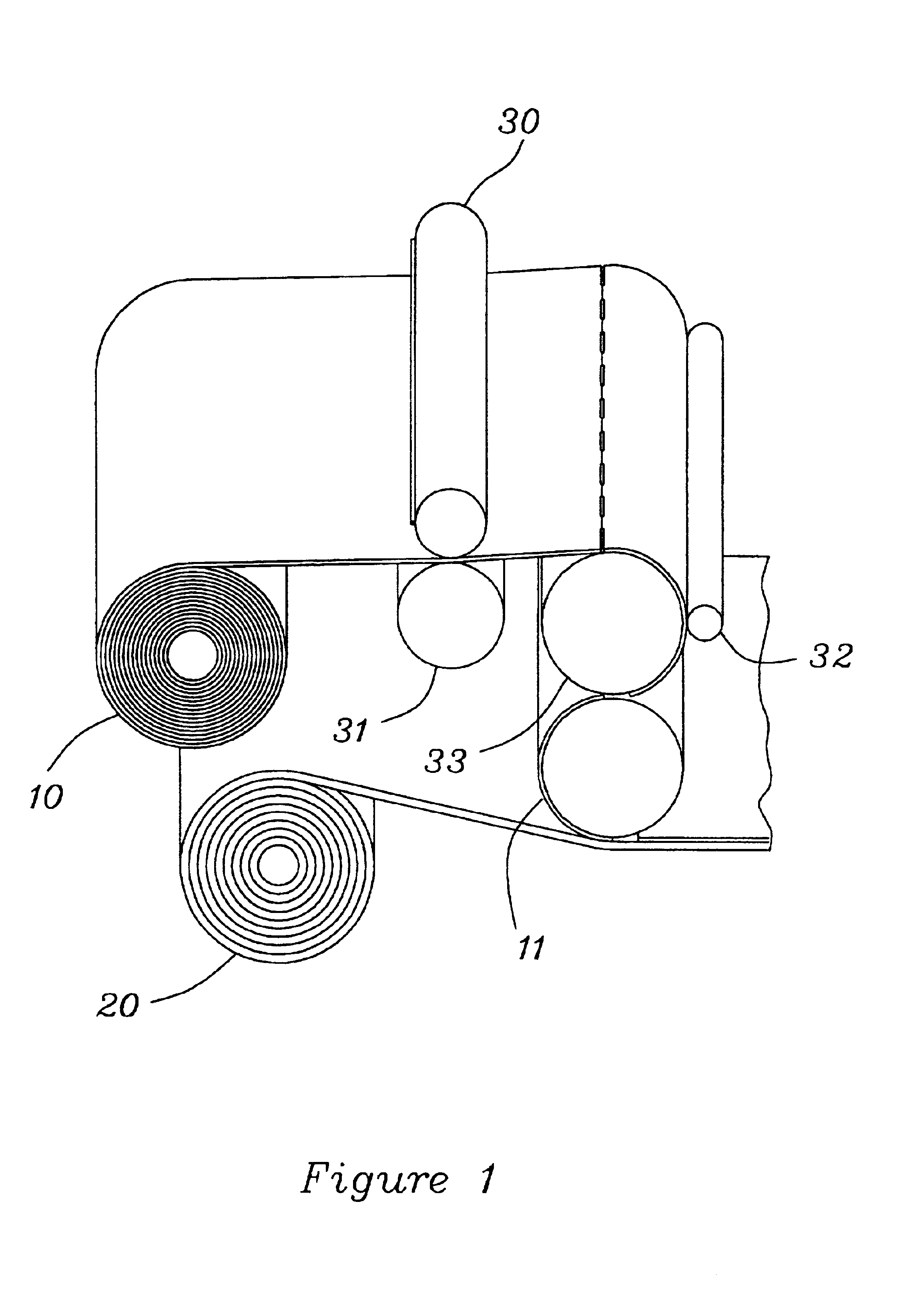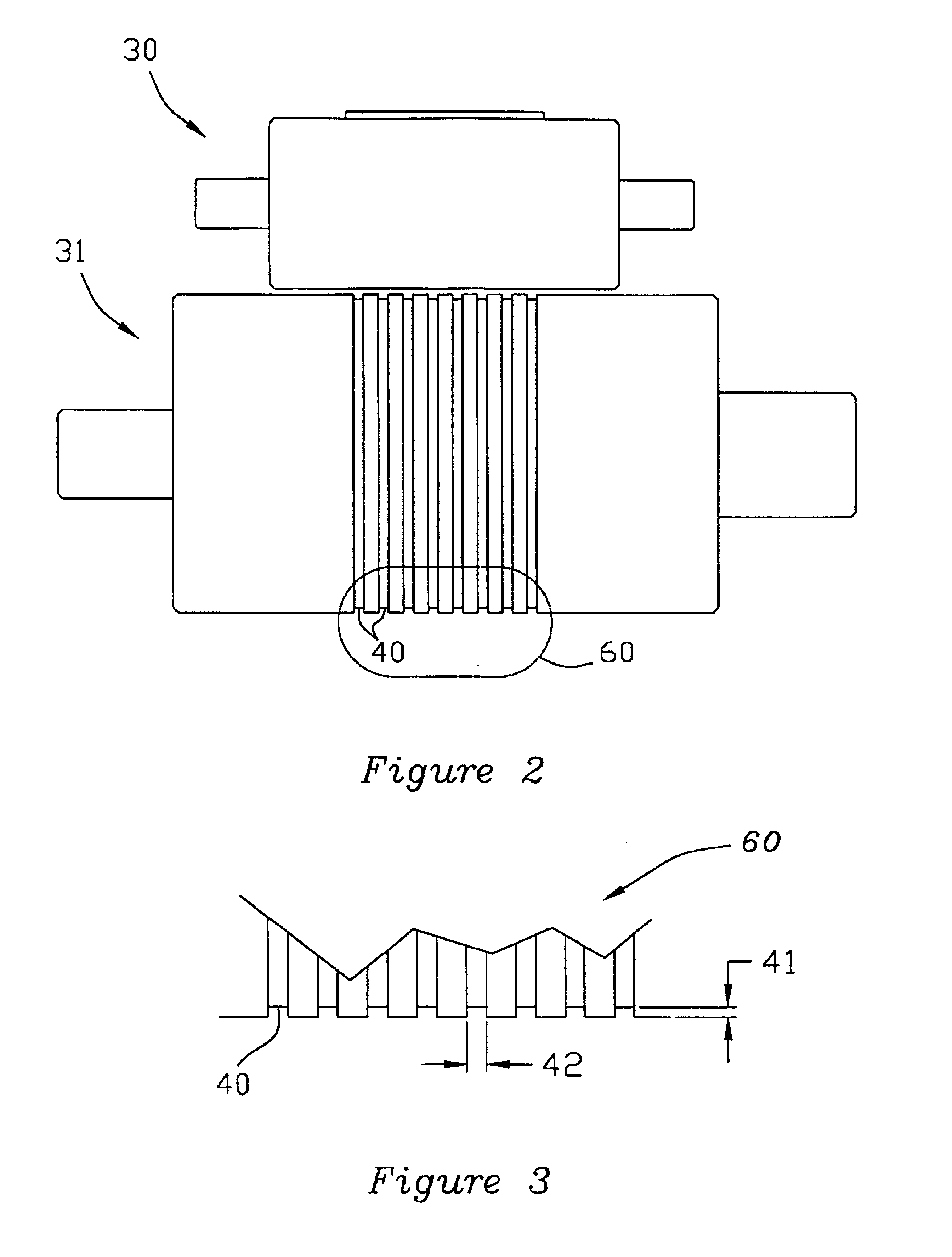Continuous method of providing individual sheets from a continuous web
a continuous web and individual sheet technology, applied in the direction of manufacturing tools, transportation and packaging, saw chains, etc., can solve the problems of increasing the difficulty of producing quality articles within their specifications, increasing the difficulty of maintaining and energy costs, and high speed can magnify the problems of material handling
- Summary
- Abstract
- Description
- Claims
- Application Information
AI Technical Summary
Benefits of technology
Problems solved by technology
Method used
Image
Examples
Embodiment Construction
The present invention provides a method and apparatus for separating sections of material from a supply of material through multiple steps in a continuous manufacturing process, while maintaining control of the sections. The total separation of a section of material comprises the following steps: severing a supply material in a plurality of discrete regions along a transverse axis, scoring the material residing between the severed regions along the same transverse axis, and then applying a force sufficient to fracture the scored regions, thereby separating the section of material from its supply.
As used in this specification and in the appended claims, score is defined to be a “non-through” cut, that is, less than 100% of a material's thickness is cut. In comparison, cut, sever, and perforate all involve a cut through the entire thickness of a material.
The means for achieving the individual steps of severing, scoring, and applying force, are broadly reaching and known to those skill...
PUM
| Property | Measurement | Unit |
|---|---|---|
| width | aaaaa | aaaaa |
| length | aaaaa | aaaaa |
| force | aaaaa | aaaaa |
Abstract
Description
Claims
Application Information
 Login to View More
Login to View More - R&D
- Intellectual Property
- Life Sciences
- Materials
- Tech Scout
- Unparalleled Data Quality
- Higher Quality Content
- 60% Fewer Hallucinations
Browse by: Latest US Patents, China's latest patents, Technical Efficacy Thesaurus, Application Domain, Technology Topic, Popular Technical Reports.
© 2025 PatSnap. All rights reserved.Legal|Privacy policy|Modern Slavery Act Transparency Statement|Sitemap|About US| Contact US: help@patsnap.com



